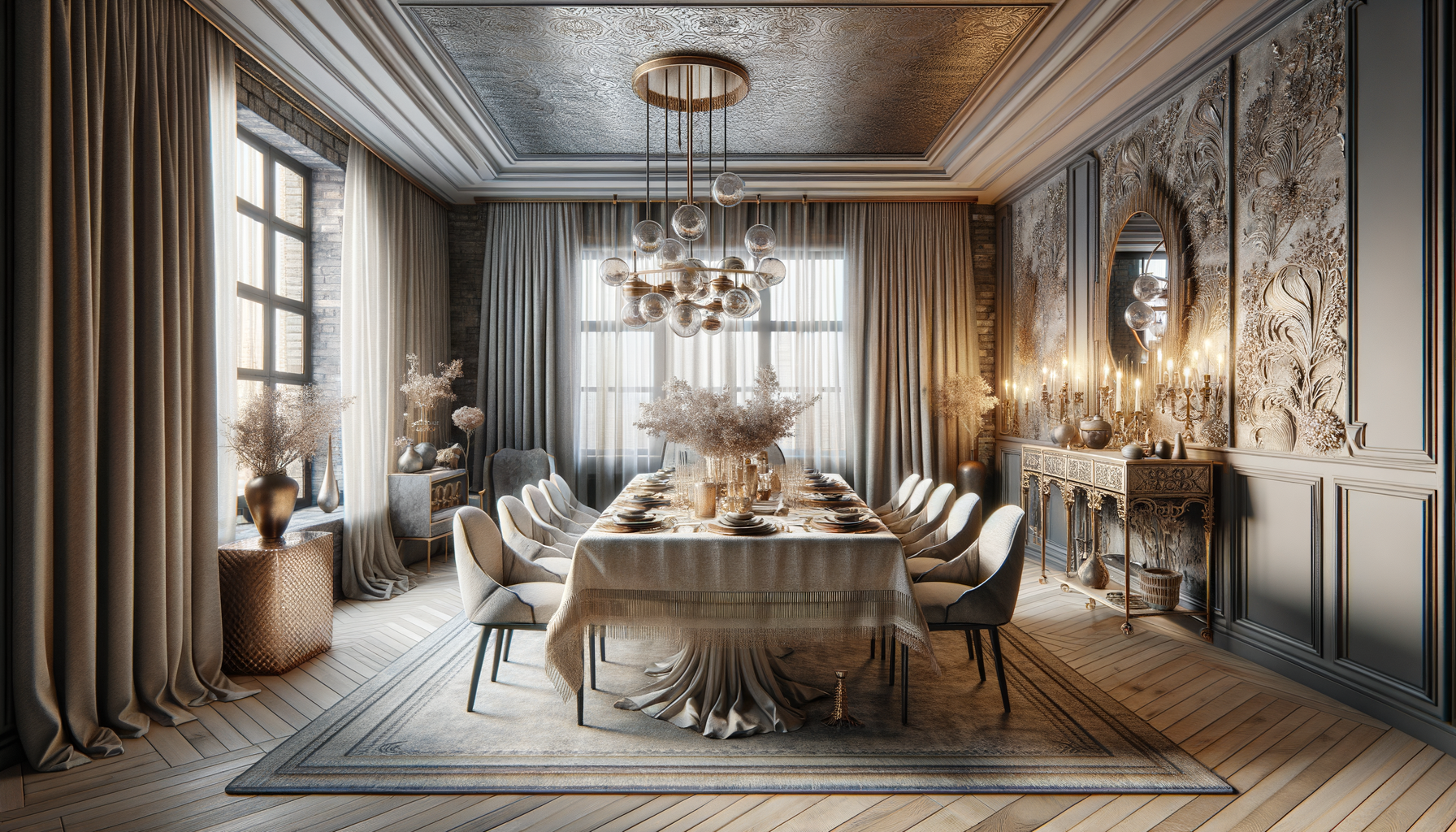“Revamping Dining Spaces: A Guide to Infusing Texture in Your Dining Room Decor”

Dining rooms lend themselves wonderfully to creative interior design ideas, with a multitude of opportunities to add unique finishing touches to elevate the space. One way to achieve this is through textures, which can take the overall aesthetic of your dining room to the next level. Textures invigorate your dining area and can greatly enhance your interior’s appeal. However, it’s essential to be aware of the best ways to incorporate texture, so read on for handy tips to bring depth and interest to your dining room design.
Wall texture can add an extra level of sophistication to your dining room and can be accomplished in a myriad of ways. Wallpaper, for instance, is often underestimated. Many believe it’s a relic from decades ago. On the contrary, modern wallpapers have evolved significantly, such as three-dimensional designs that offer the look of architectural features. They’re available in a range of aesthetics, from ultra-modern to vintage florals. Wallpaper’s versatility makes it an excellent choice for adding visual depth to dining rooms.
When considering dining room textures, fabric should not be neglected. Pleated, ruffled, or even velvet tablecloths can add a luxurious tone to your dining room and enhance your existing theme. Moreover, variation is key – mix and match textures and patterns for a layered, personal look. For instance, a crisp linen tablecloth combined with soft, silky napkins can create a sophisticated contrast that will wow your guests.
Chairs are also important textural elements with plenty of room for customization. Consider upholstered chairs with textured fabrics, such as chenille or brocade, for maximum impact. Leather chairs can create a rich, sophisticated vibe, while woven rattan or wicker options can give a more relaxed, country chic feel. A variety of chair textures will provide a tactile experience that’s pleasing to the touch and attractively complements the rest of your dining table setting.
Do not forget about the lighting either. Different finishes on light fixtures can complement or contrast with the other textures in the room, contributing to the overall depth and interest of the space. Brass, polished aluminum, or copper lights add an industrial touch, while matte or brushed finishes provide a softer look. You might also play around with various lightbulbs – Edison-style bulbs provide a warm, vintage feel, while clear bulbs are clean and modern.
Curtains are an often-overlooked textural feature. They offer an opportunity for a dramatic addition of texture and color. Heavier fabrics like velvet or brocade create a rich, sumptuous atmosphere, while lighter materials like linen or silk evoke softness and light. Layering curtains or pairing them with blinds can add both practicality and depth to the space.
Another exciting design trend is architectural textures, like exposed bricks, beams, or plasterwork, which can add a rustic charm to your room. Should you not have these features naturally, faux finishes are equally effective. Panels with a wood or stone effect, for instance, can add intensity to the aesthetics of the room.
Lastly, don’t forget about the little extras – decorative items that can increase the textural interest of your dining room, such as wreaths, vases, sculptures, or wall art. Table accessories like placemats, chargers, candlesticks, or decorative bowls can also add layers of texture promoting intrigue and depth.
All these suggestions feel authentic and natural, complementing the innate allure of texture without feeling overdone or forced. Ultimately, the textures you choose to incorporate should speak to your individual taste and help enhance the pleasure and comfort of the dining experience.
Your dining room should be an inviting space where family and friends can gather and enjoy good food and company. Texture can help to create this welcoming atmosphere, engage the senses, and add visual interest to the room. Remember, a well-textured room is a visual delight, and a dining room draped in texture will exude warmth and hospitality. It’s not merely about what’s on the table; it’s about the table itself, the chairs, the lights, and the walls. Each element has a part to play in creating a textured dining room that tells a tale of your personal character and style.
